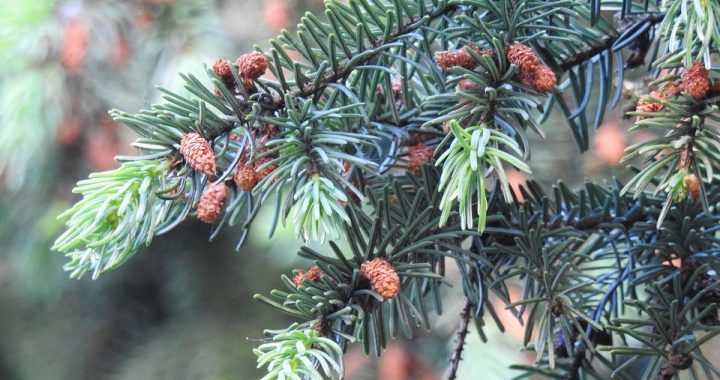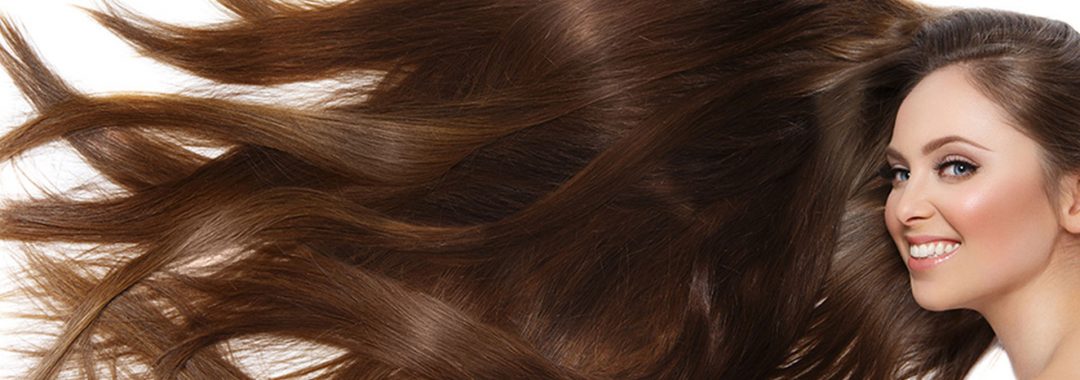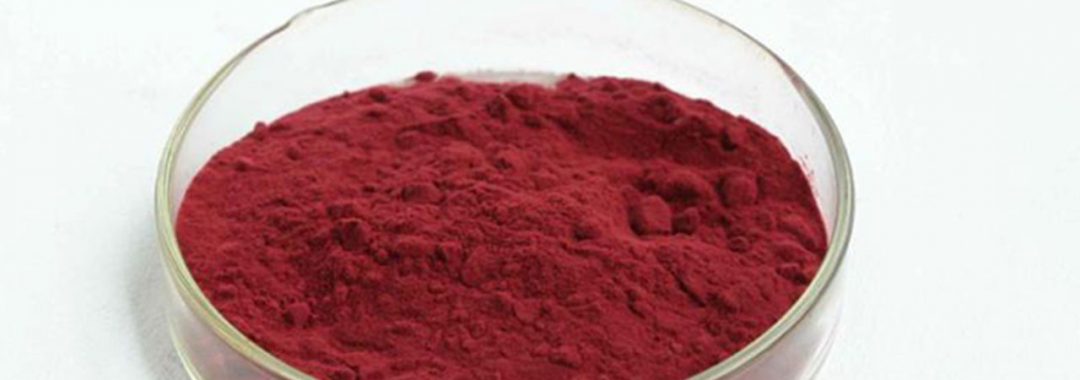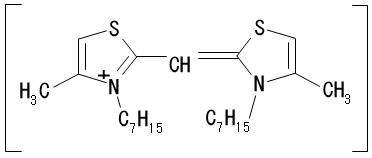Nano phenethyl resorcinol (NanoActive 377)
Nano phenylethyl resorcinol (NanoActive 377) is a new type of phenethyl resorcinol nanoliposome preparation (NanoLiposomal 377).
Product Name: Nano Liposomal 377; BioActive Phenylethyl Resorcinol; NanoActive 377; NanoAcive Phenylethyl Resorcinol; Water-Soluble 377; Fat-Soluble 377 CAS: 85-27-8
Description: Phenylethyl resorcinol is a new high-efficiency skin whitening agent derived from silver pine, which has ultra-strong potential whitening effect: In Vitro Experiments have also proved that it is ten or even hundred times stronger than that of VC. And it has also been clinically proven to its whitening ability is equivalent to that of hydroquinone. The most important thing among it is that the whitening speed is fast and is favoring to consumers. After more than ten years of continuous studying of the nature and safety of these raw materials, this emerging high-efficiency natural active substance is gradually getting permission from various countries and gradually used in cosmetics. Phenylethyl resorcinol is poorly soluble in water and susceptible to oxidization and discoloration, which limits its application in cosmetics. Nano actives with a particle size of less than 30 nm developed by nano-transmission system (NDS) enable phenylethyl resorcinol to be steadily wrapped in nano-carriers, greatly improving the absorption efficiency and bioavailability. This overcomes the original defects and retains the advantages with a more convenient and wider range of uses.
Phenylethyl resorcinol


Skin care effects
Phenylethyl resorcinol can effectively inhibit melanin synthesis by acting on multiple targets of the melanin synthesis pathway, thereby achieving whitening and brightening effect. Super antioxidant, effectively removes harmful free radicals from the skin, prevents wrinkles caused by aging and free radicals.

SymWhite 377 effectively inhibits the activity of B16 melanoma to form melanin, which is 210 times the kojia acid, and 32 times the arbutin!
Tyrosinase inhibitory activity

Whitening test–skin model
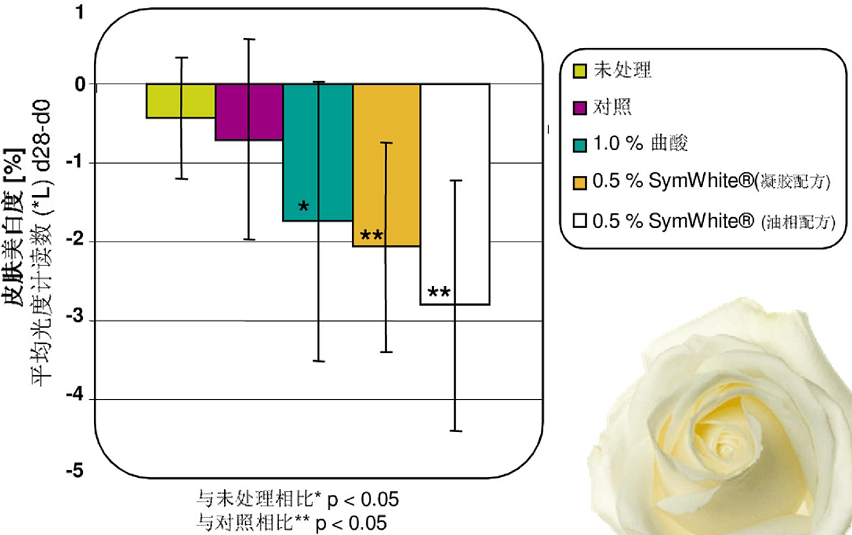
Clinical trial (unirradiated skin)
Features
- Added NanoActive 377 to the formula and the color remained the same.
- NanoActive 377 uses FDA GRAS grade materials for high safety
- NanoActive E has good heat, pH and shear stability and is easy to use
- NanoActive 377 greatly improves the stability and bioavailability
- NanoActive 377 can improve the stability of other active matters in the product and facilitate absorption
- NanoActive E is 100% water soluble and 100% oil soluble (amphiphilic) for a wide range of application.
Applications
- Inhibits melanin synthesis, reduces pigmentation and whitens the skin
- Eliminate free radicals and prevent skin aging.
- Reduce acne marks
The market claims:
- Originated from the essence of evergreen conifer
- Is a powerful whitening ingredient
- Effectively evens skin tone, leaving skin quickly regaining whiteness, clearness, and regaining the bright skin tone of young skin.
- Lightens dark spots, and the skin becomes bright after use
- A powerful antioxidant that can be used to fight harmful free radicals that cause skin aging
- Mild texture, no side effects that irritate the skin
- Ultra-micro-nano wrapping technology, effective penetration and does not change color
Use: add it at room temperature. Heat it to above 40℃to speed up the dissolution. Recommended dosage: 0.1-5%. The optimum pH range of the system is 3.0-6.5, and the finished product should be protected from direct sunlight (using opaque packaging). It is recommended to add UV absorber to day care products.
Storage: Keep it away from light at a temperature below 25℃.
NanoActive RES
Nanoactive Res is a novel resveratrol nanoliposome preparation (NanoLiposomal Resveratrol).
Product Name: Nano Liposomal Res, Nanoactive Res; BioActive Resveratrol; NanoActive Resveratrol CAS: 501-36-0
Description: Resveratrol (“Res”) is a non-flavonoid polyphenolic compound. A Japanese called Tokaoka was the first one who obtained it by separating it from the roots of Veratrum granginorumin 1940. With the in-depth study of resveratrol, it has been shown that resveratrol has a wide range of activities such as anti-cancer, anti-oxidation, anti-bacteria and anti-inflammation which can be broadly used in medicine, health care products, food, cosmetics and other fields. Resveratrol has many targets in the skin, so it can be used as a skincare product to produce whitening, anti-wrinkle, anti-bacteria, anti-inflammation, acne curing and anti-aging effects. It is an emerging natural active substance with high efficiency. However, resveratrol is hardly soluble in water while easy to be oxidized and discolored, which limits its application in cosmetics. The nano actives, developed with the nano-transmission system (NDS), has a particle size of less than 30nm, and enables the resveratrol to be steadily encapsulated in nano-carriers, greatly improving the absorption efficiency and bioavailability. This overcomes the original defects while maintaining the advantages with a more convenient and wider range of uses.


Resveratrol

Number of papers on resveratrol in PUBMED over years

Resveratrol can effectively prolong life span
Skincare effect
Resveratrol is a natural antioxidant present in plants. Its antioxidant capacity is 20-50 times that of L-C. If applied simultaneously with L-C, the effect will be multiplied. Resveratrol inhibits collagenase, reduces collagen degradation, promotes collagen proliferation, and firms skin. Resveratrol allows cells to enhance their self-defense enzymes, thereby repairing damaged DNA, while effectively inhibiting oncogenic proteins produced by UVB exposure. Resveratrol can effectively inhibit melanin synthesis by reacting with multiple targets required for melanin synthesis, thereby achieving whitening and brightening effect.
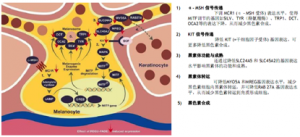
Resveratrol inhibits melanin synthesis through multiple targets
Features
- NanoActive RES uses FDA GRAS grade materials for high safety
- NanoActive RES is stable to heat, pH and shearing, so it is convenient to use.
- NanoActive RES greatly improves the stability and bioavailability of resveratrol
- NanoActive RES can improve the stability of other active matters in the product and facilitate absorption
- NanoActive RES is 100% water soluble and 100% oil soluble (amphiphilic), allowing a wide range of uses.
Applications
- Promote collagen synthesis, improve skin thickness and elasticity, remove wrinkles, and firm your skin
- Inhibit melanin synthesis, reduce pigmentation and whiten your skin
- Eliminate free radicals and confront skin aging
- Promote wound healing and reduce scars
- Cure acne and reduce acne marks.
- Anti-bacteria, diminish inflammation and sensitization, and provide analgesic effects
- Prevent scarring and fibrosis
Use:Add it at room temperature. You may heat it to over 40℃ to speed up the dissolution. Recommended dosage: 1-5%. The optimum pH range of the system is 3.0-6.5, and the finished product should be protected from direct exposure to sunlight (using opaque packaging). It is recommended to add UV absorber to day care products.
Storage: Keep it away from light at a temperature below 25℃.
Experimental proof
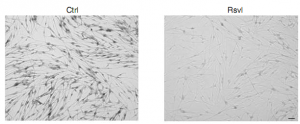
Resveratrol inhibits intracellular melanin synthesis

Resveratrol tyrosinase activity is superior to kojic acid

Low concentration of resveratrol (0.001%) can reduce B16F10 cell melanin by 50%

Two-week application can provide noticeable whitening effect

Resveratrol has obvious anti-wrinkle effect

Resveratrol (0.001%) is effective in treating acne


Before RES treatment After RES (0.001%) treatment
PIONIN
Highly Efficient in Anti-Bacteria & Anti-Melanin
Highly efficient with very low dose of use
Borad activity to resist bacteria, fungi and pathogens.
0.00002% PIONIN can inhibit the growth of
propionibacterium acnes
0.00001% PIONIN can inhibit 83 % melanin formation
Anit-acne: quickly and significantly reduce spots
Reduce 50% of spots or rashes within 2 weeks
Preservative activity: improve the efficacy of
parabens or completely replace them
High security
Compliant with Japanese Quasi Drugsto be used in anti-acne products
 ⇒
⇒ 
Fast & deep effect on anti-acne & anti-freckle effect
In Vitro Test : Strongly inhibit propionibacterium acnes.

In Vivo Tests: Effectively reduce propionibacterium acnes.

Number of propionibacterium acnes on the skin during skin care process.
Clinical Test: Within two weeks, it reduced 50% spots
Testing program: Carry out test in 38 testees with acne problems.
Method: Wash face 3 times every day with emulsion containing 0.001% of PIONIN and smears twice a week with cream containing 0.005% of PIONIN.

Bactericidal activity : PIONIN can be used as a preservative
The PIONIN’s bactericidal ability allows it to be used as a preservative. In vitro test data shows that in term of anti-bacteria and anti-fungi of various kinds, PIONIN is more effective than paraben methyl ester. Therefore, just adding a small amount of paraben in the formulation containing PIONIN is enough to achieve an antibacterial effect.

PIONIN can be used alone ( See the picture below, the number of E. coli contained in 0.002% PIONIN ).
PIONIN can compensate for the methylparaben ( Adding 0.002% PIONIN can lead to an increase of anti-E. Coli activity of 0.05% Methylparaben).
When mixed with polyols, PIONIN can completely replace parabens as a preservative.

Highly efficient molecule in anti-bacteria & anti-melanin
PIONIN similar to cyanine dyes. Even a single PIONIN molecule also has anti-bacterial activity, which is the reason why PIONIN is still efficient even with an extremely low dose:
-resistant to propionibacterium acnes
and inhibits melanin production
-improves the corrosion resistance
of finished products

By causing collapse of cell membrane and cell wall and intracelluar degradation, PIONIN will damage the microorganisms.
Inhibits bacteria and fungi with an extremely low dose of use ( In vitro test )
In vitro test (see table below, agar plate dilution) proves that the extremely low dose of use of PIONIN can also inhibit a wide range of bacteria and fungi. The lowest concentration of PIONIN used to inhibit bacterial growth is called the Minimum Inhibitory Concentration (MIC).

Strong inhibition of melanin
PIONIN can prevent the formation of melanin. In vitro test indicates that:
– 0.000003% PIONIN can suppress 50% melanin formation
– 0.00001% PIONIN can suppress 83% melanin formation.
In contrast, 0.07% kojic acid can inhibit 100% melanin formation.

Highly safe and non-irritant
Human body patch test ( human body, 0.2%, 48 hours ): negative
Initial skin irritation ( rabbit, 0.2%, 24 hours ): negative
Sustained skin irritation ( rabbit, 0.01%, 90 day ): negative
Eye irritation ( rabbit, 0.0007%, 24 hour ): negative
Skin sensitization ( Guinea pig, 0.2%, maximum test ): negative
Phototoxicity ( rabbit, 0.2%): negative
Photosensitization ( Guinea Pig, 0.2%, Adjuvant-Strip Method ): negative
Induced gene mutation (10μg, Ames test, ±S9 mix): negative
Acute Toxicity LD 50 ( mouse ): 325 mg/kg
Application : Aniti-acne, anti-freckle, whitening, cleansing
Anti-acne, oily skin, anti-freckle
Whitening
Cleaning formula, hand cream
Definition
Commodity names : PIONIN
English name : BIOXYNE
INCI name : Quaternary Ammonium Salt -73
China INCI (2007): has been included
China INCI (2010): has been included
CAS#: 15763-48-1
EINECS#: 239-852-5
Related regulations : Compliant with Japanese Quasi-drugs for using in acne products.
Formula Guidelines

Technical indicators

Storage

NanoLift
Instantly enhances facial contours.
Long-lasting resistance to skin sagging
Improves eye wrinkles.
Repairs neck fine lines Continue reading→
NanoCalmin
Good anti-irritant ingredients Effectively reduces itching and erythema Antihistamine, anti-oxidation Reduces inflammation symptoms.Continue reading→
Puripharm works together with Huzhou Center of Industrial Biotechnology, Chinese Academy of Sciences, to build a joint laboratory
Originally written by: Yi Wei Pu Run, 1 week agoContinue reading→
Bioactive HD 100
Hexamidine diisethionate;HD-100;BioActive HD 100;Elestab HP 100.
anti-dandruff; anti-acne; anti-dermatitis; deodorizing; stratum corneum repair; skin anti-aging.
CAS: 659-40-5.
NanoActive Asta
NanoActive Asta, Nano-liposomal haematococcus astaxanthin.
Anti-oxidation,anti-free radicals,resists UVA,UVB damage,protects cells and promotes cell differentiation,anti-inflammatory.Continue reading→
Puripharm works together with Huzhou Center of Industrial Biotechnology, Chinese Academy of Sciences, to build a joint laboratory
At the beginning of 2018, PuriPharm Co., Ltd. and Huzhou Center of Industrial Biotechnology, Shanghai Institutes for Biological Sciences, Chinese Academy of Sciences (CAS), signed the cooperation agreement on seeking common development by jointly establishing the Puri Joint Research and Development Laboratory.Continue reading→
PIONIN-Highly Efficient in Anti-Bacteria & Anti-Melanin
√ Highly efficient with very low dose of use
- Borad activity to resist bacteria, fungi and pathogens.
- 0.00002% PIONIN ® can inhibit the growth of propionibacterium acnes
- 0.00001% PIONIN ® can inhibit 83 % melanin formation
